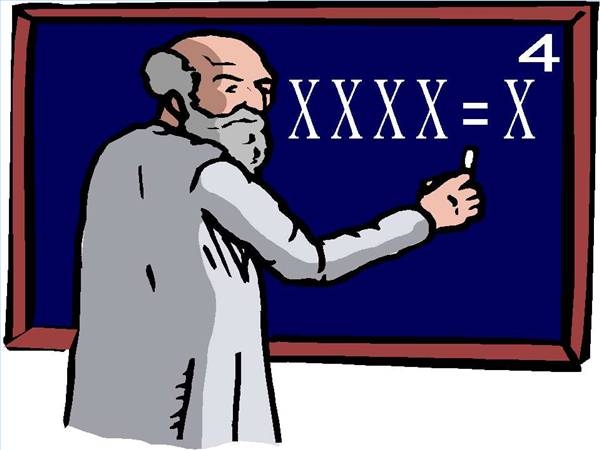There are four important rules you must always remember when solving questions dealing with exponents.
Rule One: When you multiply two exponents with the same base, add the exponents.
Examples of Rule One:
(x^3)(x^4) = x^(3+4) = x^7
(x^5)(x^3) = x^(5+3) = x^8
(3^2)(3^2) = 3^(2+2) = 3^(4) = 81
(2^2)(2^4) = 2^(2+4) = 2^6 = 64
Note: You cannot simplify (x^4)(y^3) because the bases are different.
Rule Two: When you divide two exponents with the same base, subtract the exponents.
Examples of Rule Two:
(x^4) ÷ (x^3) = x^(4-3) = x^1 = x
(x^5) ÷ (x^3) = x^(5-3) = x^2
(3^2) – (3^3) = 3^(2-3) = 3^(-1) = 1/3
(2^2) ÷ (2^4) = 2^(2-4) = 2^(-2) = 1/(2^2) = 1/4
Rule Three: When you have an exponent expression which is raised to a power, multiply the exponent and the power together.
Examples of Rule Three:
(x^2)^4 = x^(2×4) = x^8
(3^2)^2 = 3^(2×2) = 3^4 = 81
(4^3)^2 = 4^(3×2) = 4^6 = 4096
(2^3)^5 = 2^(3×5) = 2^15
Notes:
1. If you have a product inside a set of brackets and a power outside of the brackets, then the power in applied to each element inside the brackets.
For example, (xy^2)^3 = x^(1×3)y^(2×3) = (x^3)(y^6).
2. This rule does not work if you have a sum or a difference within the brackets. For example, (3+4)^2 is not equal to 3^2 + 4^2. Do not make this mistake! Exponents do not “distribute” over addition or subtraction. Instead, we will have that (3+4)^2 = (3+4)(3+4) = (7)(7) = 7^2 = 49.
Rule Four: Anything to the power zero is “1”.
Examples of Rule Four:
3^0 = 1
x^0 = 1
((x^3)(y^6))^0 = 1
(x^5)^0 = x^(5×0) = x^0 = 1
Looking to get ready for the SAT? We can help with SAT Prep
This was written for you by Mia, one of the tutors with Test Prep Academy.


